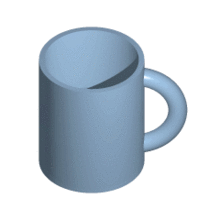Topološka analiza podatkov
Osnutek odseka
-
Lecturer:
- Žiga Virk (ziga.virk@fri.uni-lj.si)
Assistants:
- Aleksandra Franc (aleksandra.franc@fri.uni-lj.si)
- Damir Franetič (damir.franetic@fri.uni-lj.si)
-
Naloženo 31/05/17, 14:04
-
Introduction. Basic definitions and concepts: metrics, continuous maps, homeomorphisms, homotopy type.
Textbook: Chapter 1
-
Triangulations in the plane, Voronoi diagram, Delaunay triangulation.
Textbook: Chapter 2
-
Naloženo 2/10/25, 12:30
-
-
Geometric simplicial complexes, Abstract simplicial complexes, Euler characteristic
Textbook: Chapter 3
-
Jupyter Notebook, to be opened locally.
-
Jupyter Notebook, to be opened locally.
-
Julia file, can be included via
include(line_sweep.jl).
-
-
Triangulated manifolds, orientation. Classification of surfaces.
Textbook: Chapter 4-
Jupyter Notebook, to be opened locally.
-
Jupyter Notebook, to be opened locally.
-
-
Carve a pumpkin
Simplicial complexes on data sets:
- Vietoris Rips complex
- Cech complex
- The nerve construction
- Mapper
Textbook: Chapter 5
-
Vector spaces and their quotients. Intuition and idea of homology.
Textbook: Chapter 6, idea of chapter 7
-
Homology groups
Textbook: Chapters 7 and 8.1
-
Computing homology
Textbook: Chapters 7 and 8.1
-
Persistent homology
Textbook: Chapter 9
-
Filtrations, persistence modules, interleavings, Gromov-Hausdorff distance, Stability theorem for persistent homology
Textbook: Chapters 9 and 10
-
An overview of topological data analysis.
-
Discrete Morse theory: discrete Morse functions, discrete gradient vector fields; Morse chain complex and Morse homology
Textbook: Chapter 11 -
Write to Santa...
-
Celebrate New Year
-
Discrete Morse Theory problem session
-
Project presentations

